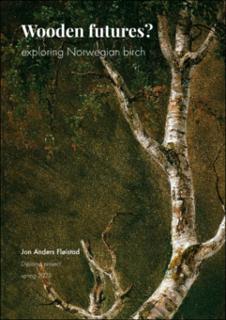| dc.description | Every year, more timber grow than what is harvested in Norwegian woods, and birch is the most under-utilized wood species. In the material-driven design process, the typical approach to product design is reversed by starting with a material and designing product applications from that. Based on this, I have explored birch wood through a «7 weeks, 7 product concepts» approach, plus one concluding concept. The goal has been to work towards “know[ing] a material with your hands and not just your head.”
Throughout the project I have debated how to justify designing more products in a «full» world. In a world that seems determined to make everything disposable, we need to design objects that have value beyond economics, are made to last, and through that, are sustainable. In my master thesis I have explored this, and believe responsibly harvested, locally sourced wood can be part of the solution.
I’ve thought on how surface finishes and the material beneath interact to form patina, and how to plan for graceful aging through facilitating patina development. | en_US |


